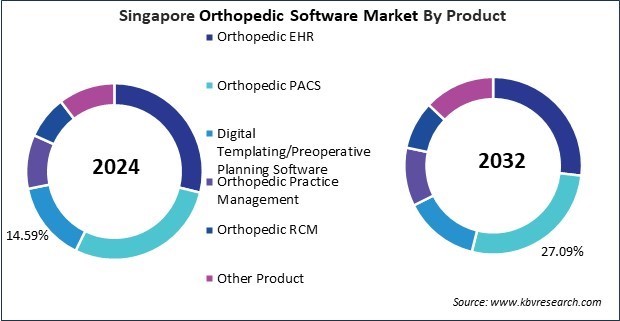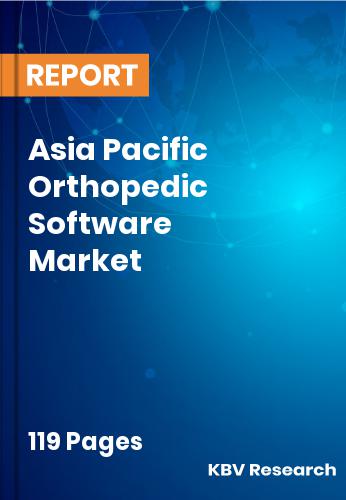The Asia Pacific Orthopedic Software Market would witness market growth of 6.1% CAGR during the forecast period (2025-2032).
The China market dominated the Asia Pacific Orthopedic Software Market by Country in 2024, and would continue to be a dominant market till 2032; thereby, achieving a market value of $48 million by 2032. The Japan market is registering a CAGR of 5.6% during (2025 - 2032). Additionally, The India market would showcase a CAGR of 6.9% during (2025 - 2032).

Rehabilitation is crucial after orthopedic procedures to ensure optimal recovery and functionality. Rehabilitation software provides patients with exercise regimens, progress tracking, and real-time feedback on their recovery journey. These solutions may include virtual rehabilitation sessions, wearables to track physical activity, and mobile apps that guide patients through rehabilitation exercises. Some software solutions also incorporate telemedicine capabilities, enabling virtual consultations with healthcare providers to monitor patient progress remotely.
Orthopedic practices benefit from specialized patient management software that helps streamline appointment scheduling, billing, and communication. These systems often include patient portals where individuals can access their medical records, schedule appointments, and receive reminders for follow-up care. Patient management software can improve the overall patient experience and operational efficiency, making it a crucial tool for orthopedic practices.
The market is poised for significant expansion across Asia, driven by region-specific healthcare developments and demographic shifts. Similarly, in Japan, the aging population is a key factor influencing the growth of the market. As of 2022, nearly 29% of Japan’s population was aged 65 and over, projected to rise to 31.2% by 2030. Furthermore, the rapidly expanding hospital sector in India—comprising 80% of the country’s total healthcare industry—is fostering strong growth prospects for orthopedic software solutions. With the industry valued at $132 billion by 2023 and attracting considerable domestic and foreign investment, hospitals are pressured to modernize their services to meet rising demand. Also, the market in China is driven by the increasing prevalence of osteoporosis and related conditions. According to research, osteoporosis affects 19.2% of women and 3.2% of men aged 50 and above—a significant portion of the aging population. Therefore, an aging population, rising bone health issues, and expanding healthcare sectors are fuelling orthopedic software adoption across the Asia Pacific.
Free Valuable Insights: The Global Orthopedic Software Market is Predict to reach USD 678.22 Million by 2032, at a CAGR of 5.4%
Based on Mode of Delivery, the market is segmented into Web/Cloud Based, and On-premise. Based on Application, the market is segmented into Orthopedic Surgeries, Fracture Management, and Other Application. Based on Product, the market is segmented into Orthopedic HER, Orthopedic PACS, Digital Templating/Preoperative Planning Software, Orthopedic Practice Management, Orthopedic RCM, and Other Product. Based on countries, the market is segmented into China, Japan, India, South Korea, Singapore, Malaysia, and Rest of Asia Pacific.
By Mode of Delivery
By Application
By Product
By Country
Our team of dedicated experts can provide you with attractive expansion opportunities for your business.

